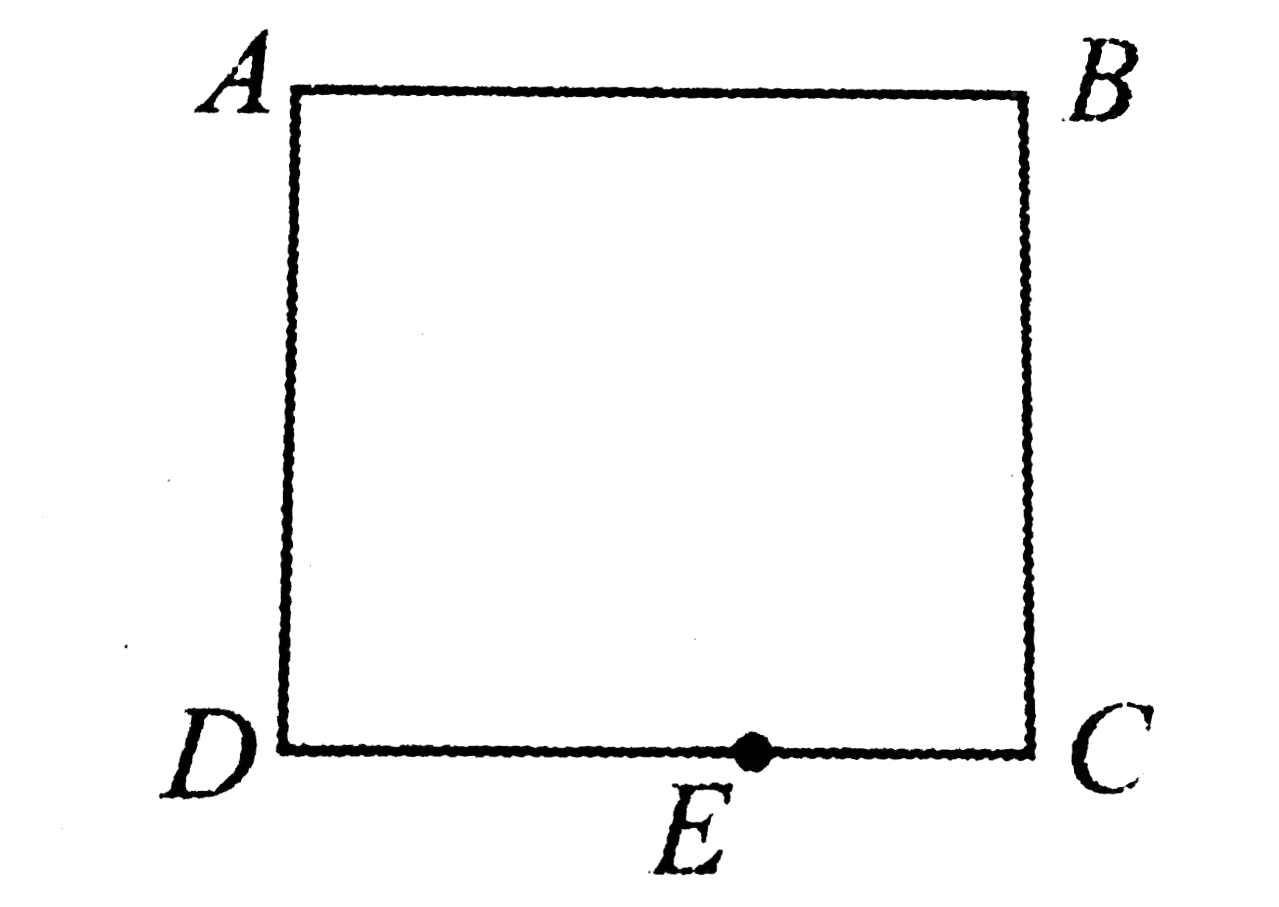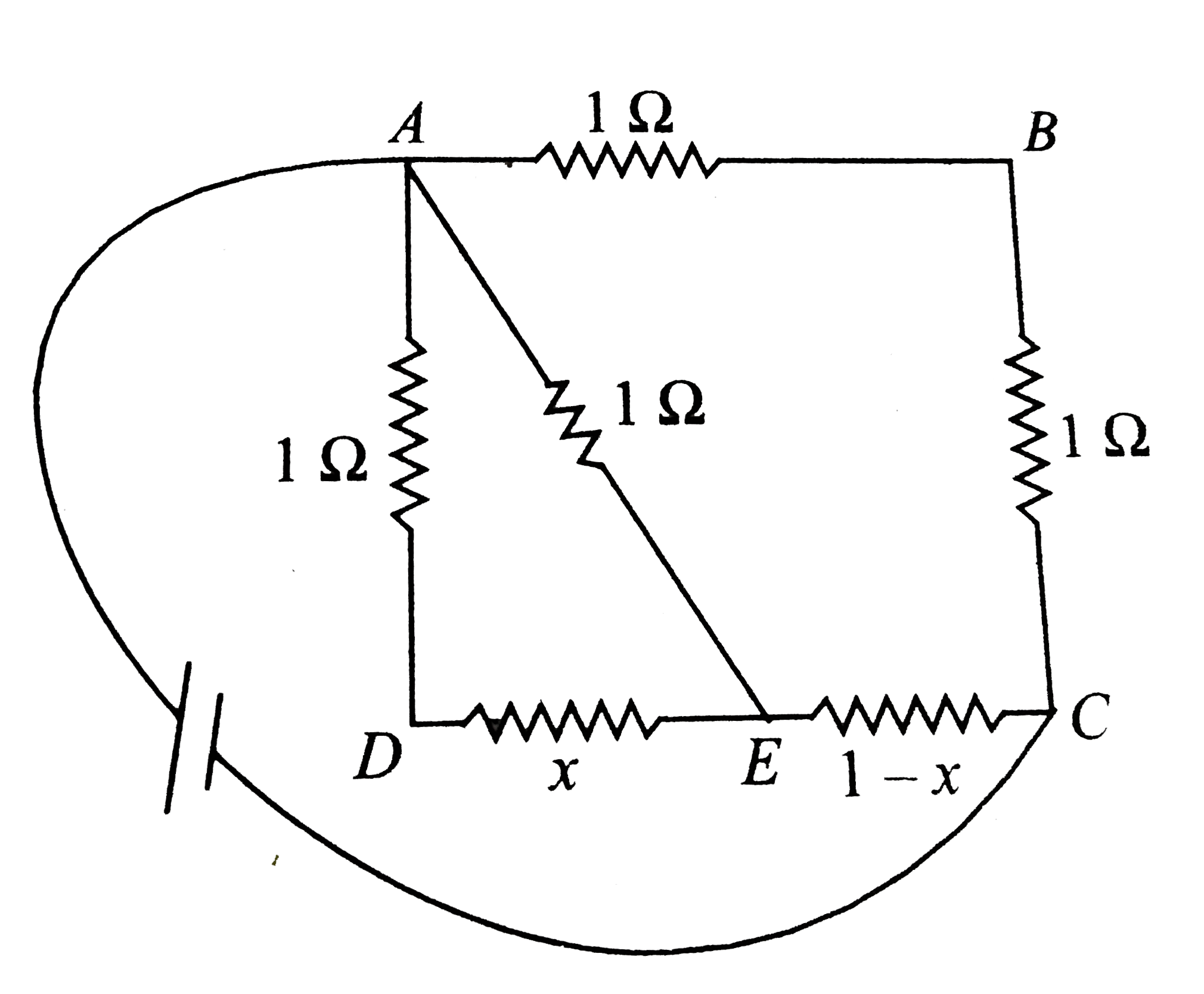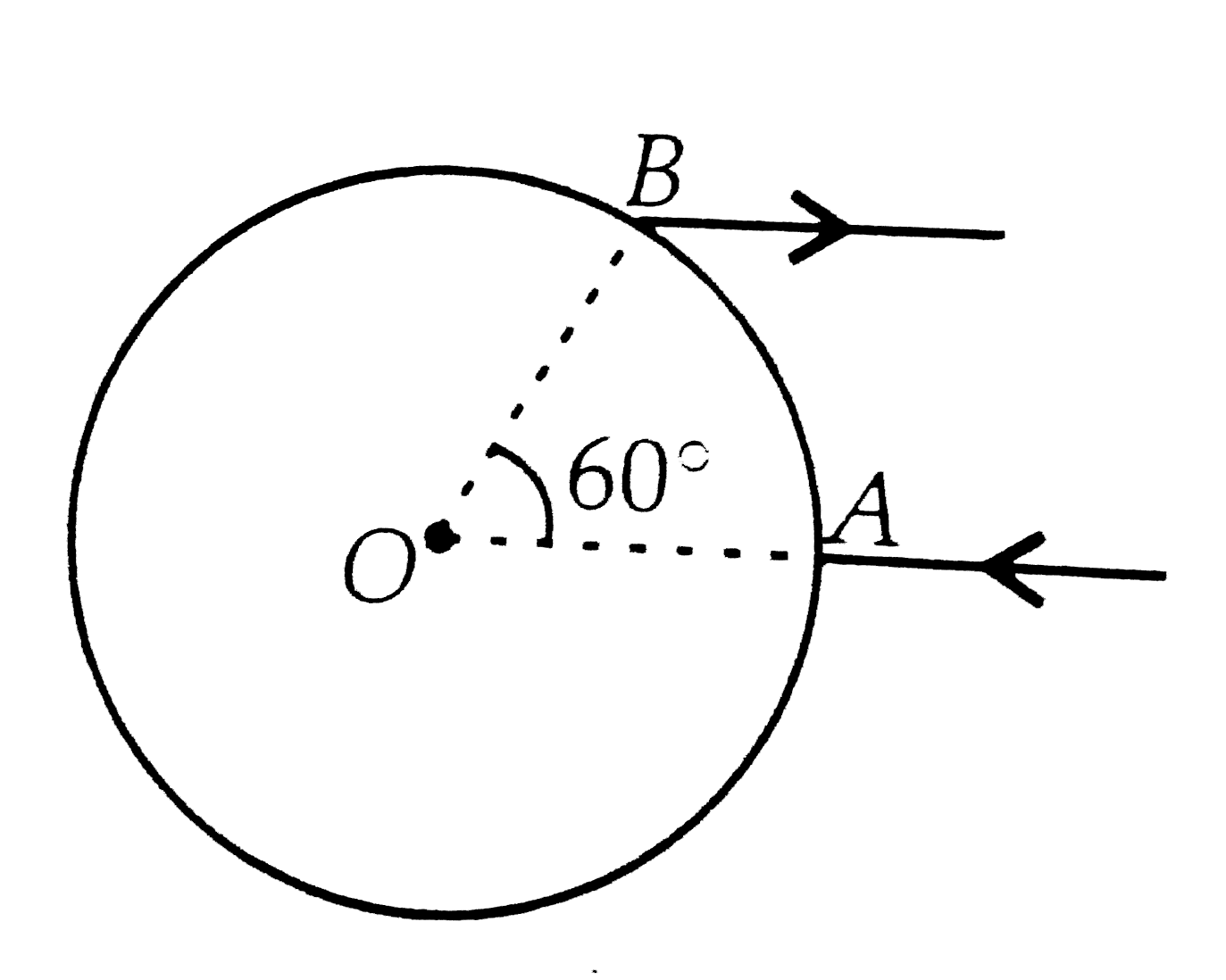ABCD is a square where each side is a uniform wire of resistance 1Ω. A point E lies on CD such that if a uniform wire of resistance 1Ω is connected across AE and constant potential difference is applied across A and C, then B and E are equipotential.

CEED=1
CEED=1√2
CEED=1√2
CEED=√2
The correct Answer is:D
Equivalent resistance between A and E is
y=x+1x+2
For B and E to be equipotent, we get
RAERAB=RECRBCorx+1(x+2)×1=1−x1
Solve to get x=√2−1Ω
Now CEED=1−xx=√2Ω

Topper's Solved these Questions
- ELECTRIC CURRENT AND CIRCUITBOOK - CENGAGE PHYSICS ENGLISHCHAPTER - ELECTRIC CURRENT AND CIRCUITEXERCISE - Multiple Correct
16 Videos
- ELECTRIC CURRENT AND CIRCUITBOOK - CENGAGE PHYSICS ENGLISHCHAPTER - ELECTRIC CURRENT AND CIRCUITEXERCISE - Comprehension
35 Videos
- ELECTRIC CURRENT AND CIRCUITBOOK - CENGAGE PHYSICS ENGLISHCHAPTER - ELECTRIC CURRENT AND CIRCUITEXERCISE - Subjective
29 Videos
- ELECTRIC CURRENT & CIRCUITSBOOK - CENGAGE PHYSICS ENGLISHCHAPTER - ELECTRIC CURRENT & CIRCUITSEXERCISE - Kirchhoff s law and simple circuits
15 Videos
- ELECTRIC FLUX AND GAUSS LAWBOOK - CENGAGE PHYSICS ENGLISHCHAPTER - ELECTRIC FLUX AND GAUSS LAWEXERCISE - MCQ s
38 Videos
Similar Questions
Knowledge Check
A uniform wire of resistance 36Ω is bent in the form of a circle. The effective resistance across the points A and B is
 A5ΩB15ΩC7.2ΩD30Ω
A5ΩB15ΩC7.2ΩD30Ω
A uniform wire of resistance 18Ω is bent in the form of a circle. The effective resistance across the points a and b is

View SolutionIf a wire of resistance 20Ω is covered with ice and a voltage of 210V is applied across the wire , then the rate of melting of ice is
View SolutionP,Q is a uniform wire of resistance 2000Ω and M is the md point of PQ. A voltmeter of resistance 1000Ω is connected between P and M. the reading of the voltmeter, when, the potential differences applied between PQ is 150volt will be

View Solution
The equivalent resistance between points A and B of an infinite network of resistance each of 1Ω connected as shown is
View SolutionA uniform wire os resistance 12Ω is bent to form a circle. Effective resistance across two diametrically opposite points is
View SolutionA current 0.2A flows in a wire of resistance 15Ω. Find the potential difference across the ends of the wire.
View SolutionFind potential difference across the resistance 300Ω in A and B.

View Solution

